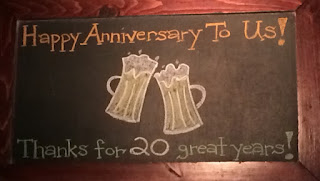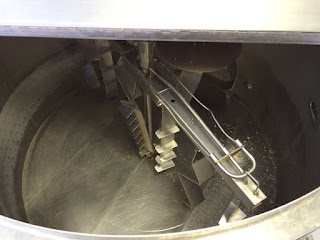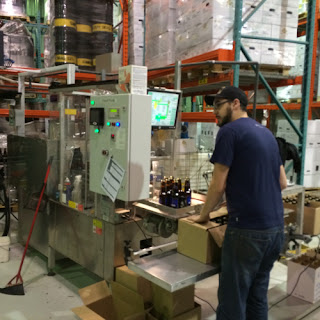 Non-Flash version of the podcast
Non-Flash version of the podcastNew York-born Dave Brodrick grew up in Fairfield County, CT and moved back to NYC over 20 years ago to make a go of working in journalism. He worked for a few different outlets, including Geraldo Rivera's "Now It Can Be Told", while bartending at Tribeca's Riverrun. But after finding journalism not entirely to his liking, and wanting to do more than just bartend, Dave decided to open his own joint somewhere in Manhattan -- a cosy neighborhood bar with good beer.
 |
| Bob, Dave, Catherine and B.R. |
In 1996 New York, "good beer" meant imports like Guinness, Hoegaarden, Newcastle, Boddingtons, and Paulaner Hefeweizen, and domestics such as Brooklyn Lager, Sierra Nevada, Pete's Wicked Ale, and Wild Goose IPA. And those were some of the best sellers, Dave recalls, when he first opened. About 10 years later when the Tiger lost their lease (to a Starbucks!) in in Dec. 2005, they relocated a block east of 7th Ave, on Bleecker at Jones St., in March 2007. With the move, the bar left all the imported beer behind. The 28 regular draught lines are almost exclusively American craft. Though they do make an exception for the occasional treat from, say, Cantillon or Dieu du Ciel.
The Blind Tiger has been recognized not only as a pioneer for craft beer bars in New York, but appreciated by locals as just a damn good bar with damn good beer. It's a must-visit pub on any beer lover's trip to NYC. In addition to the exalted Tiger, Dave has opened up two beer-centric bistros in Vermont, Worthy Burger and Worthy Kitchen, and is behind Beanery Brewing, a beer company that focuses on making coffee beer, and will be brewing at a new contract brewery located just outside of Boston and run by former Smuttynose Head Brewer Dave Yarrington. Here's to another 20 years of the Tiger!































































